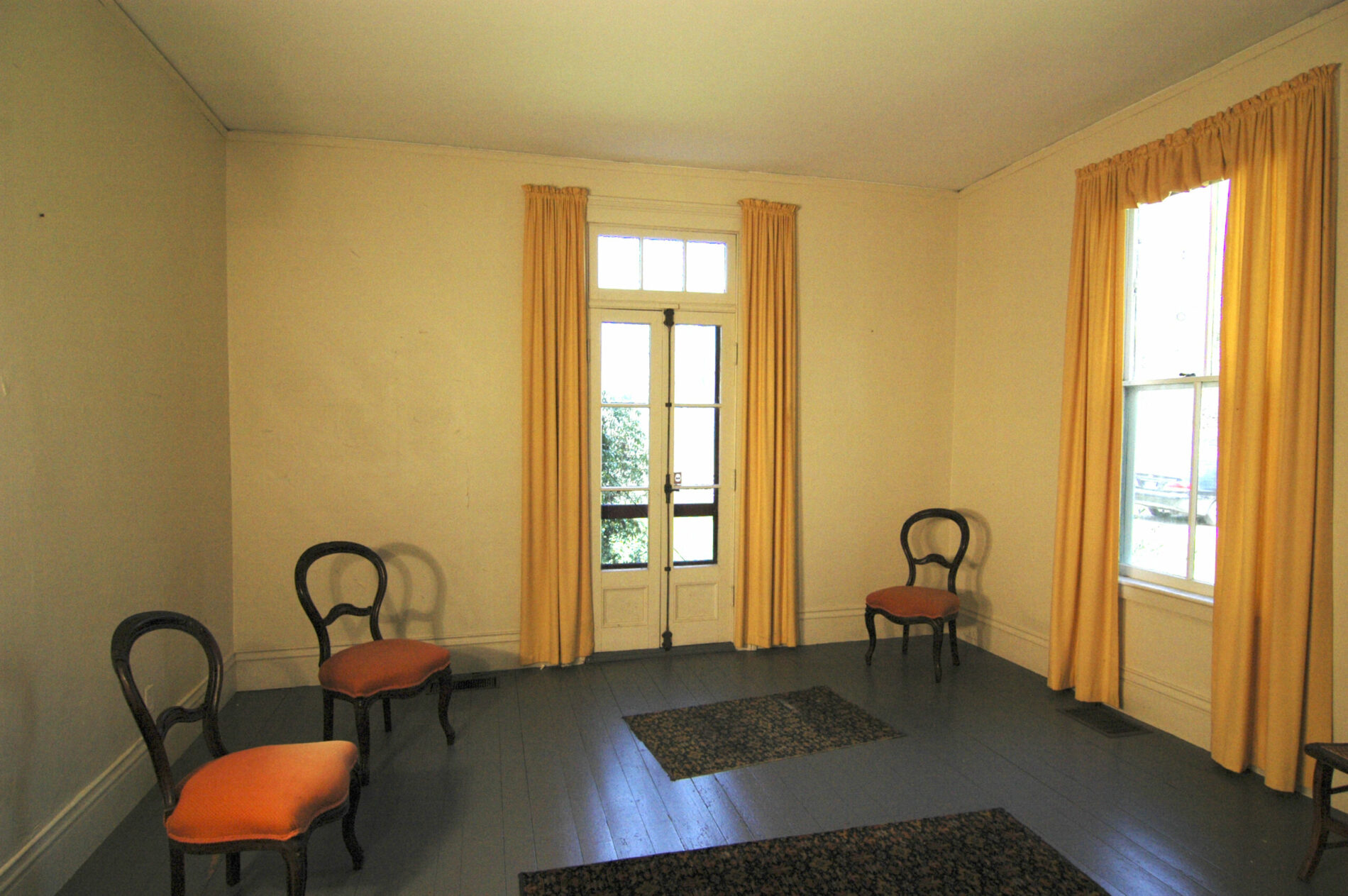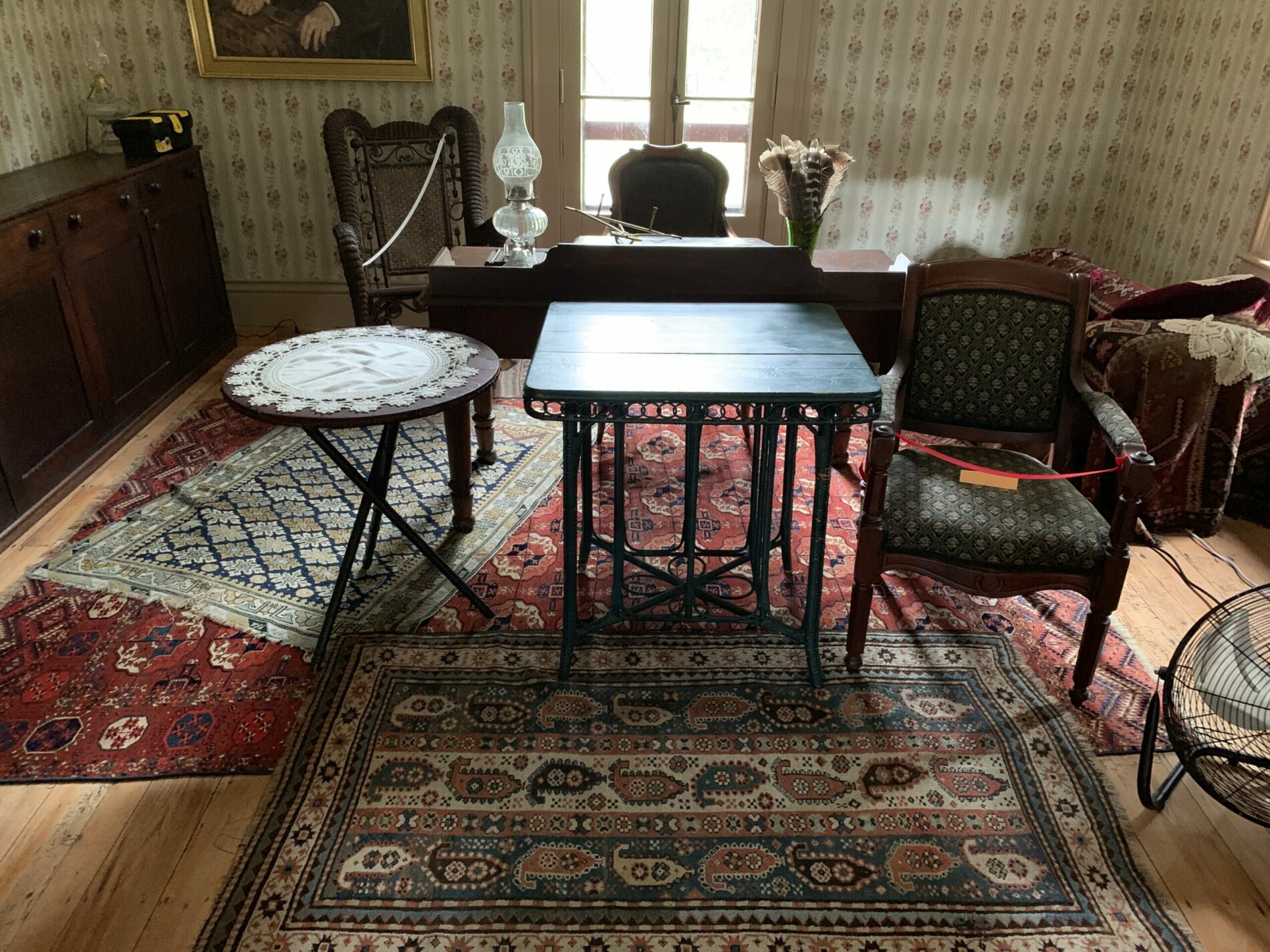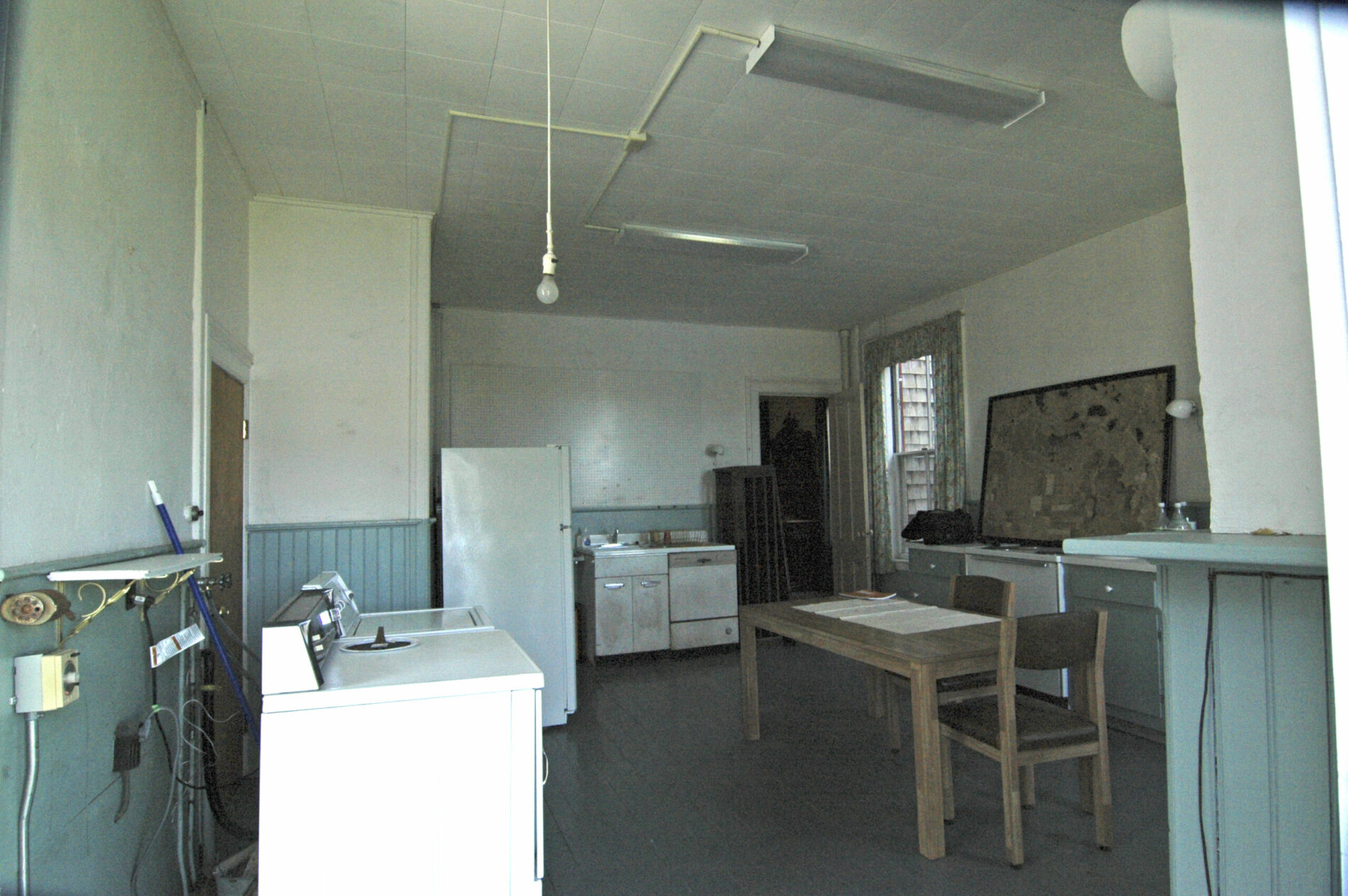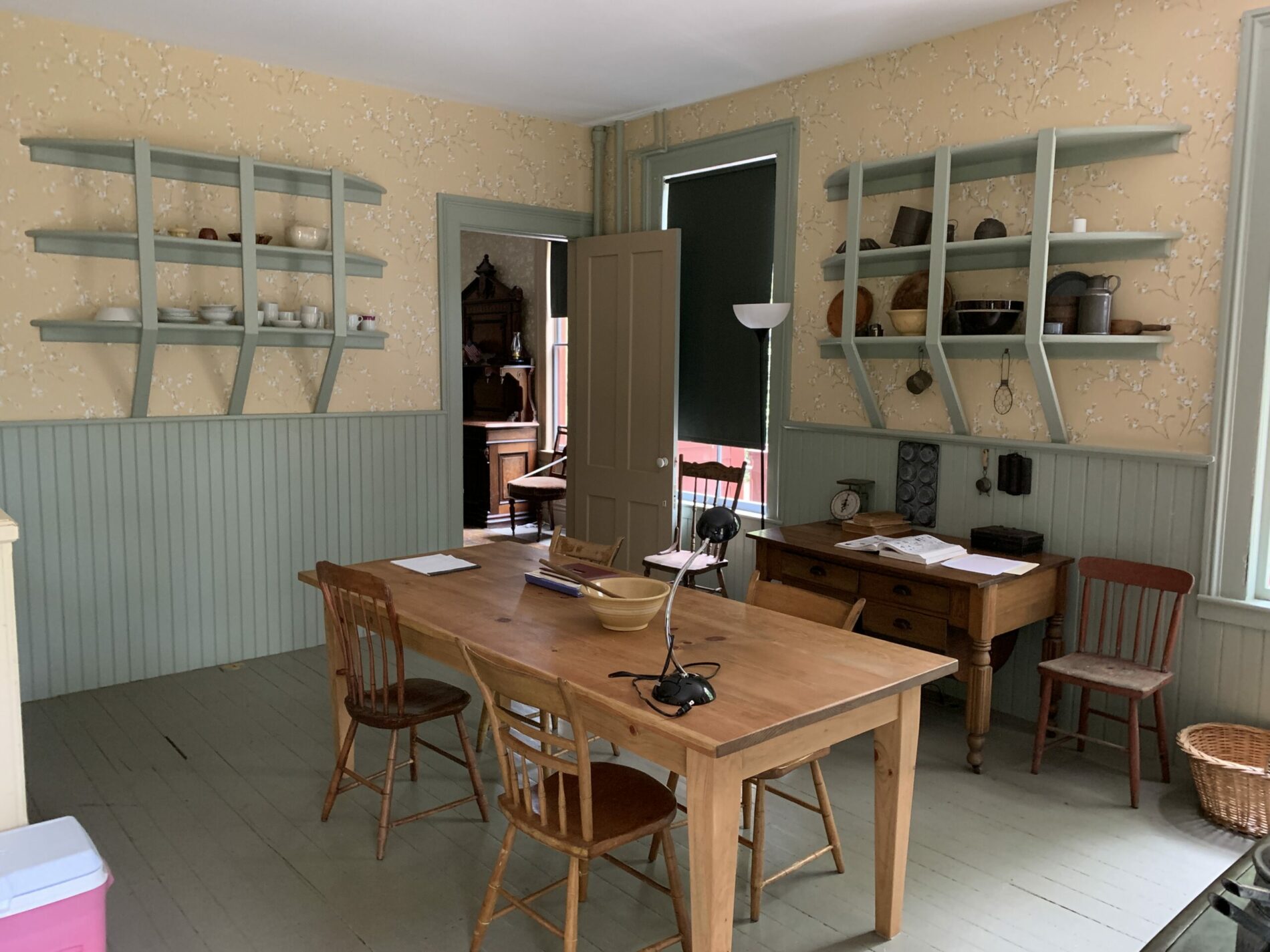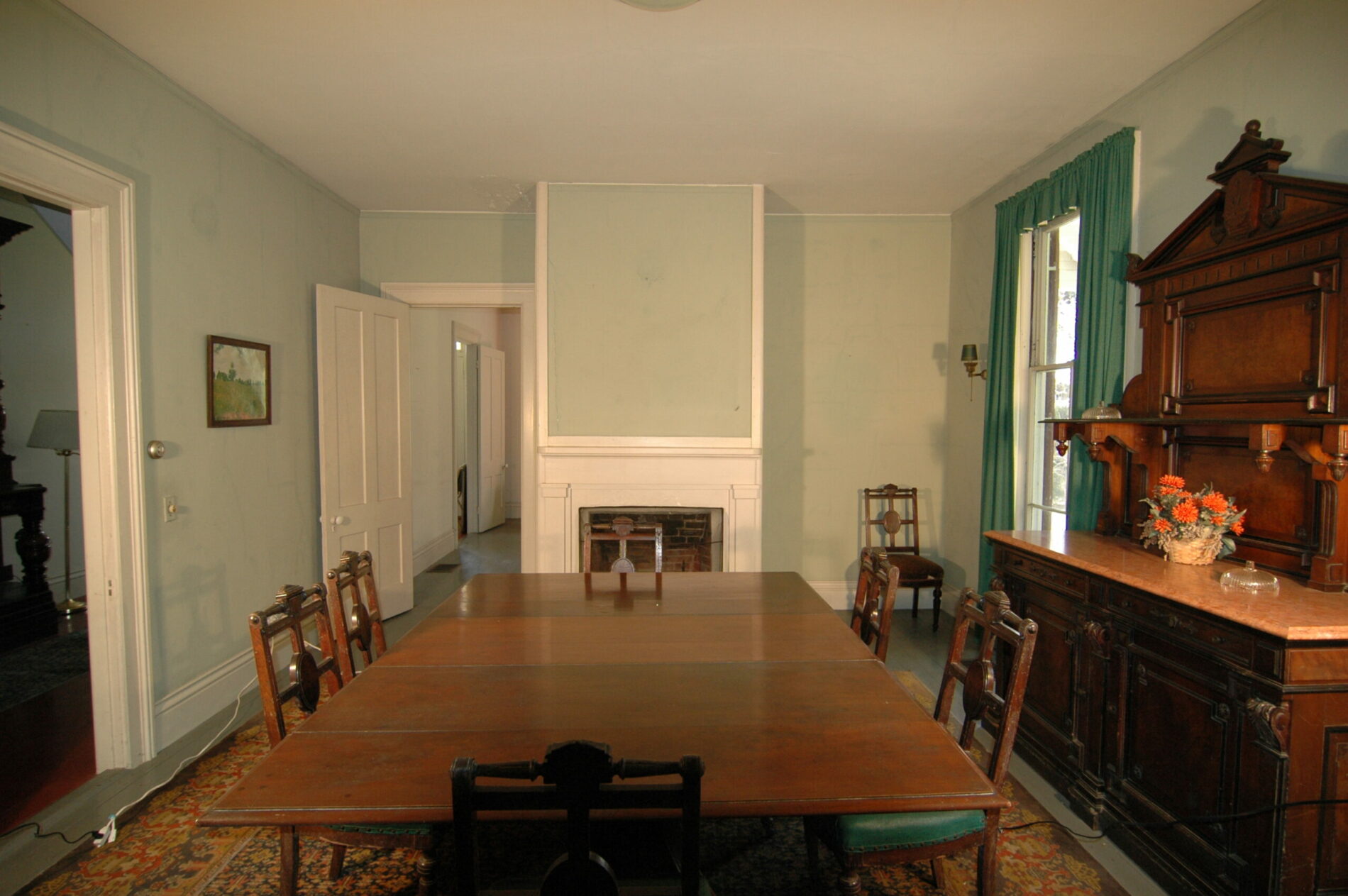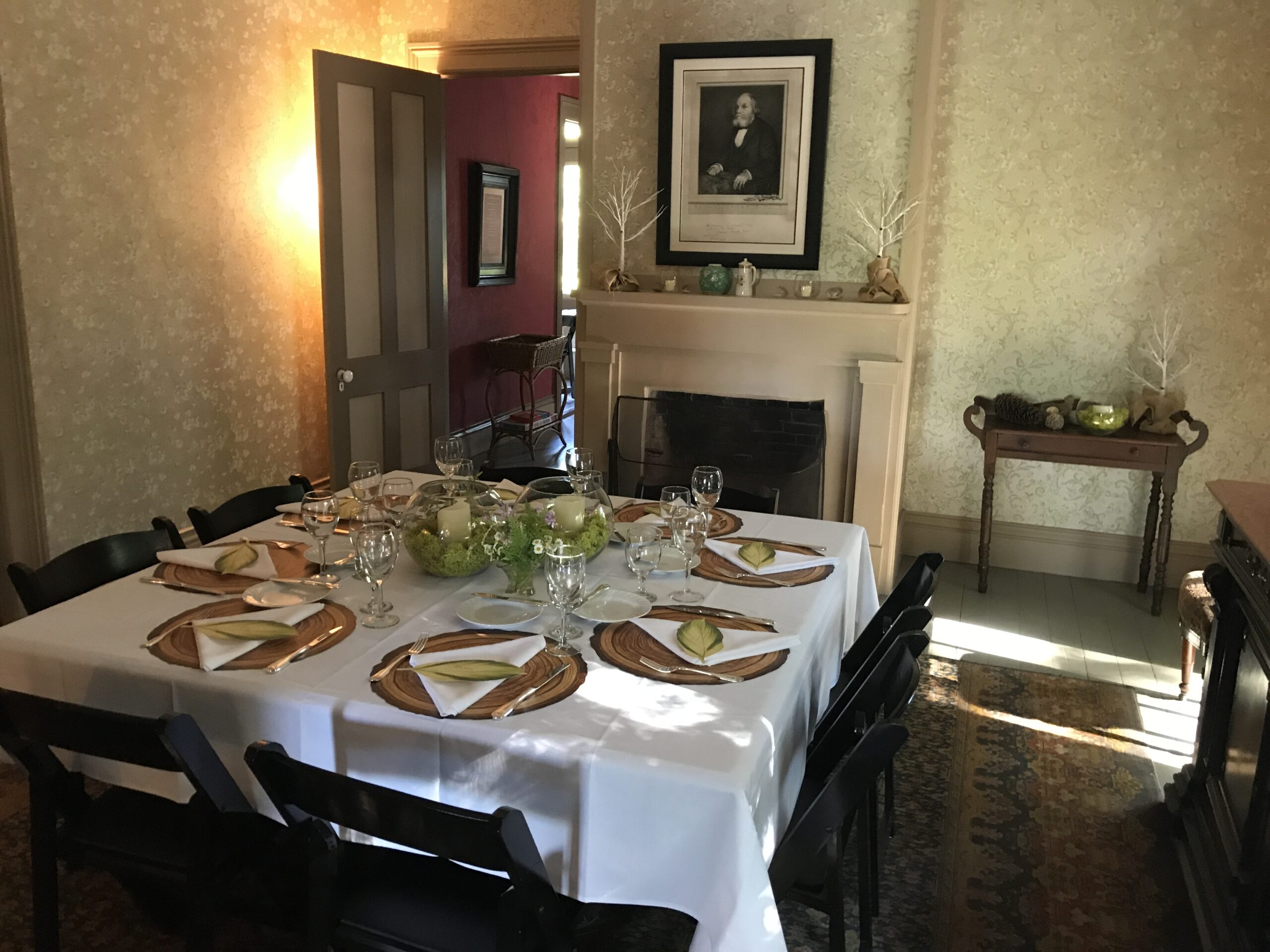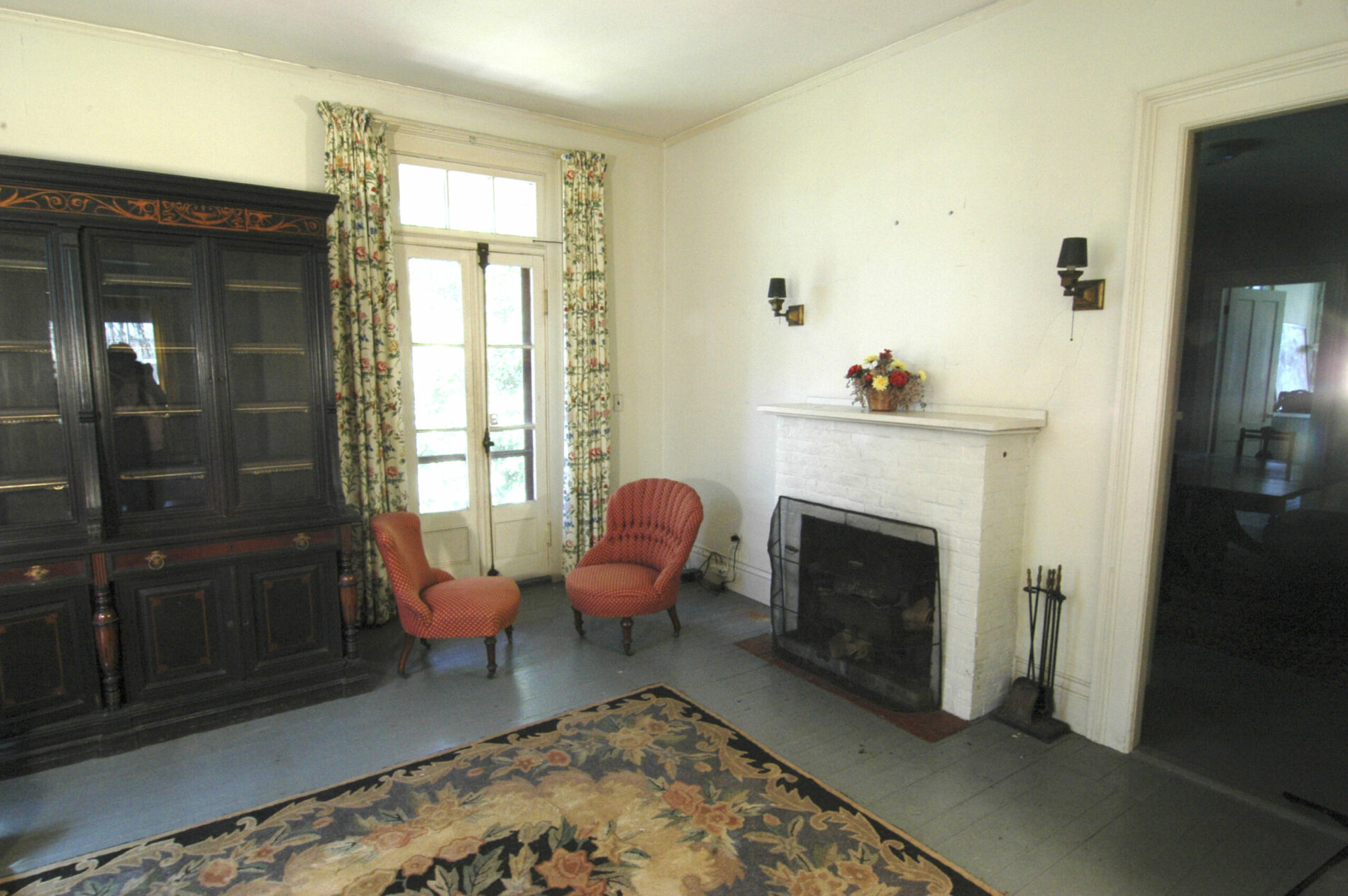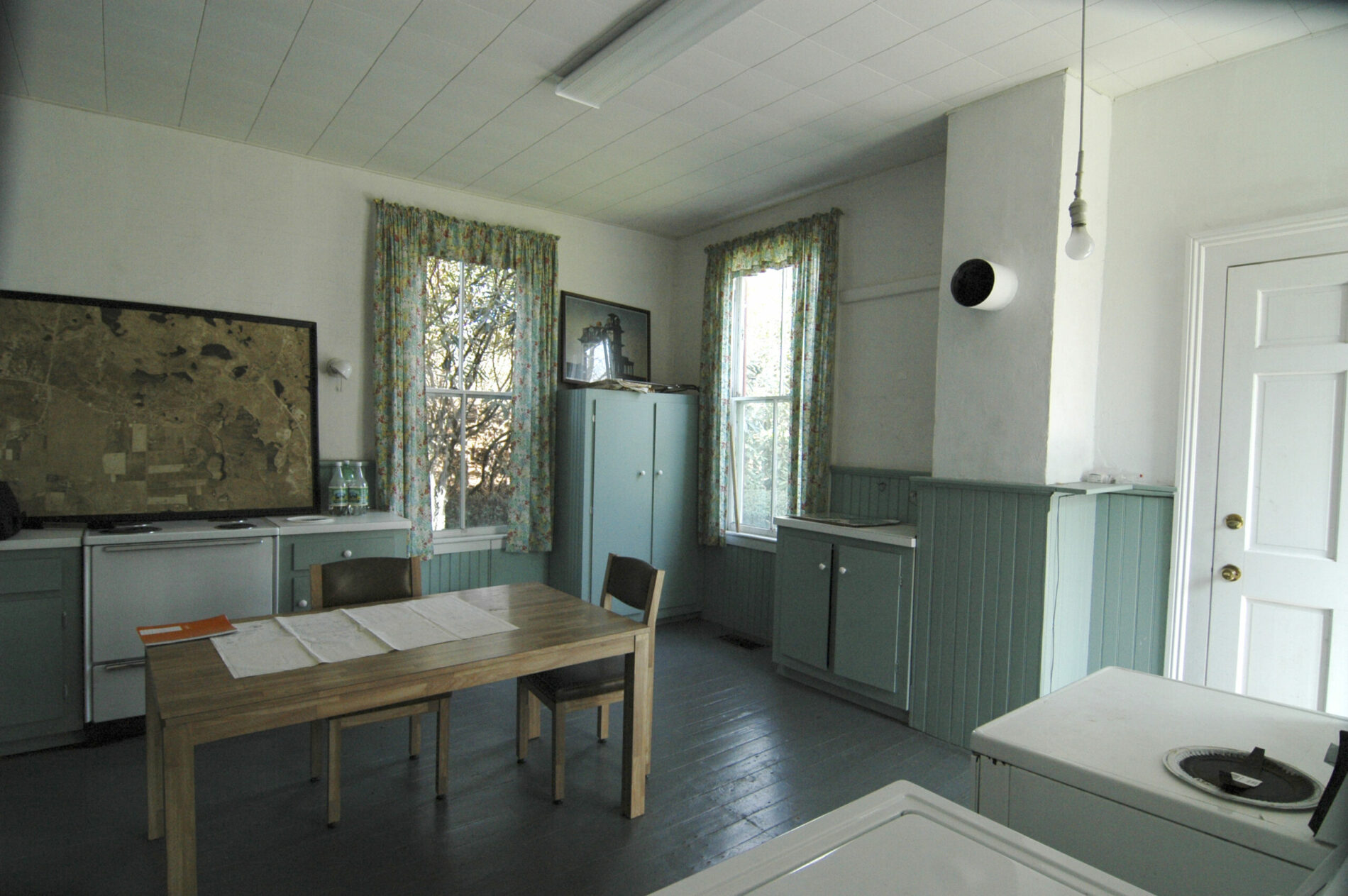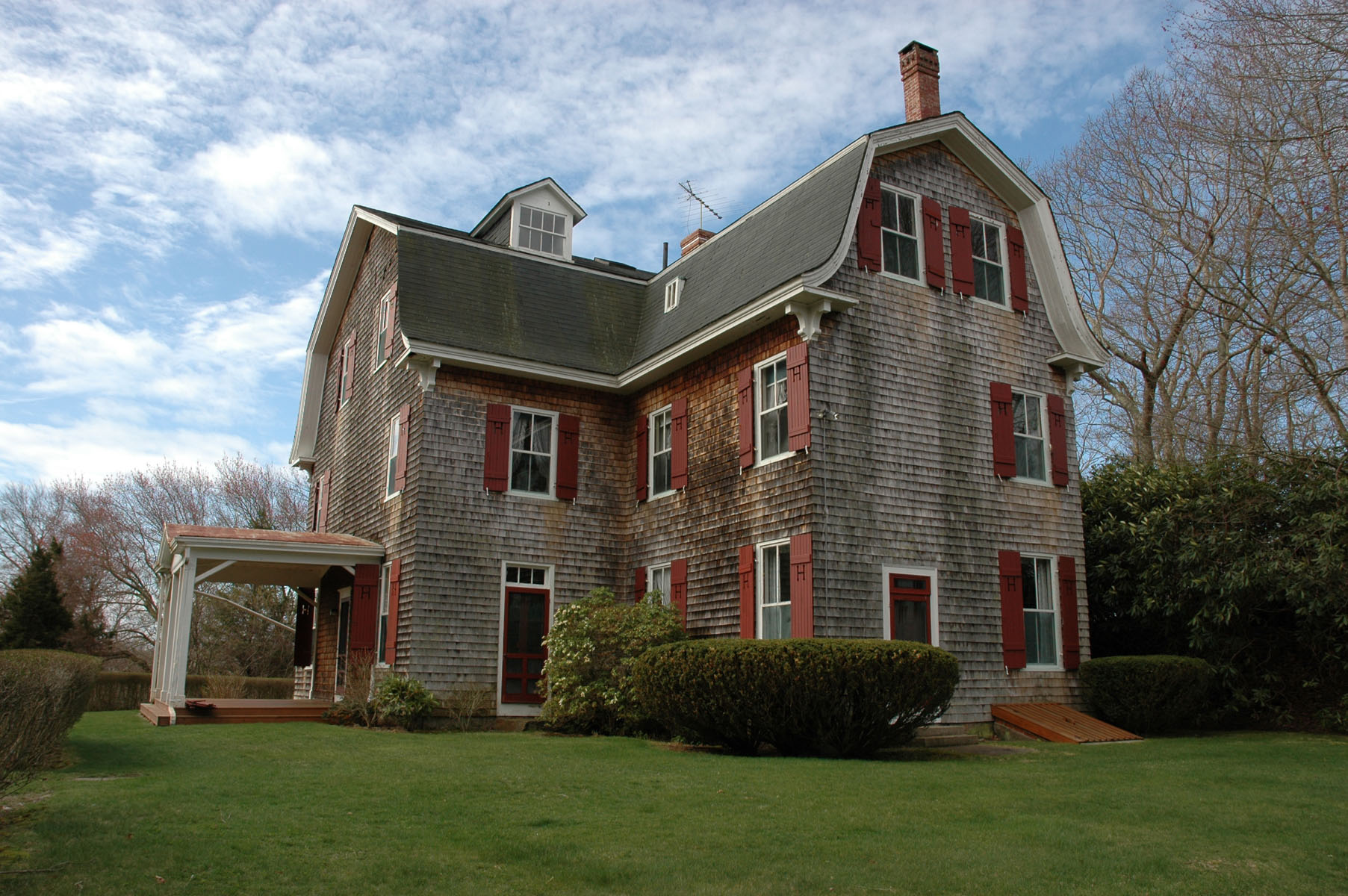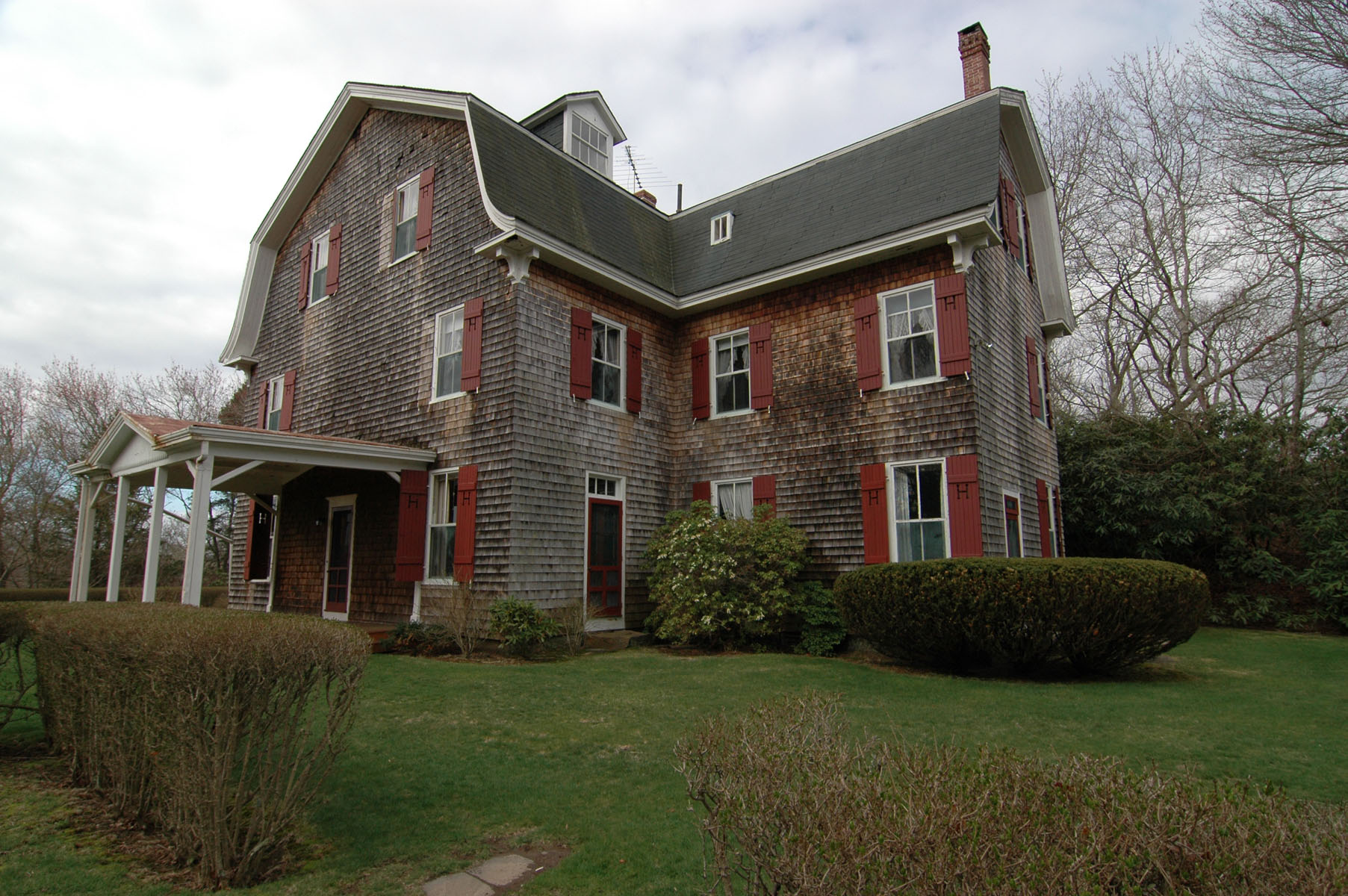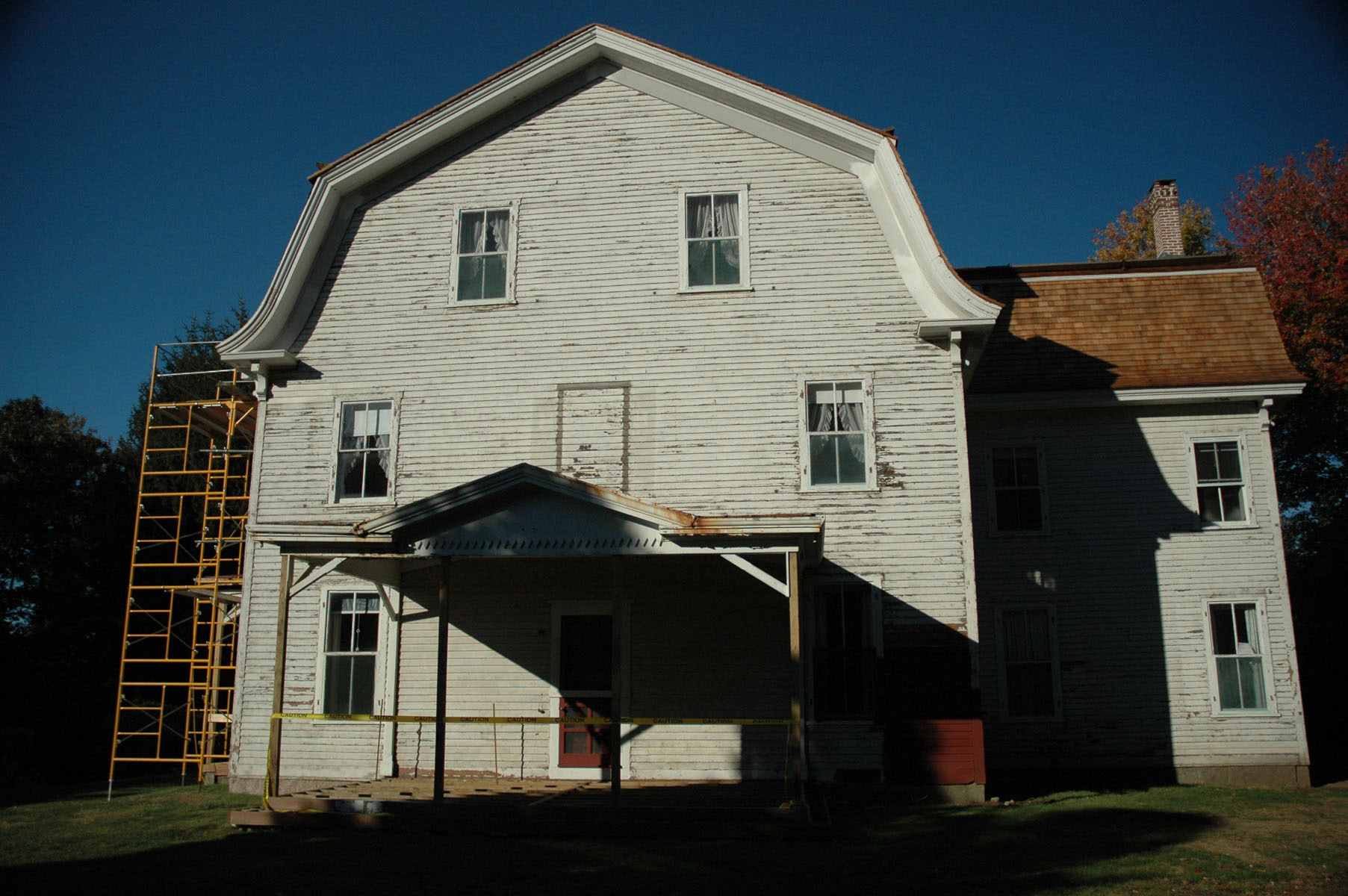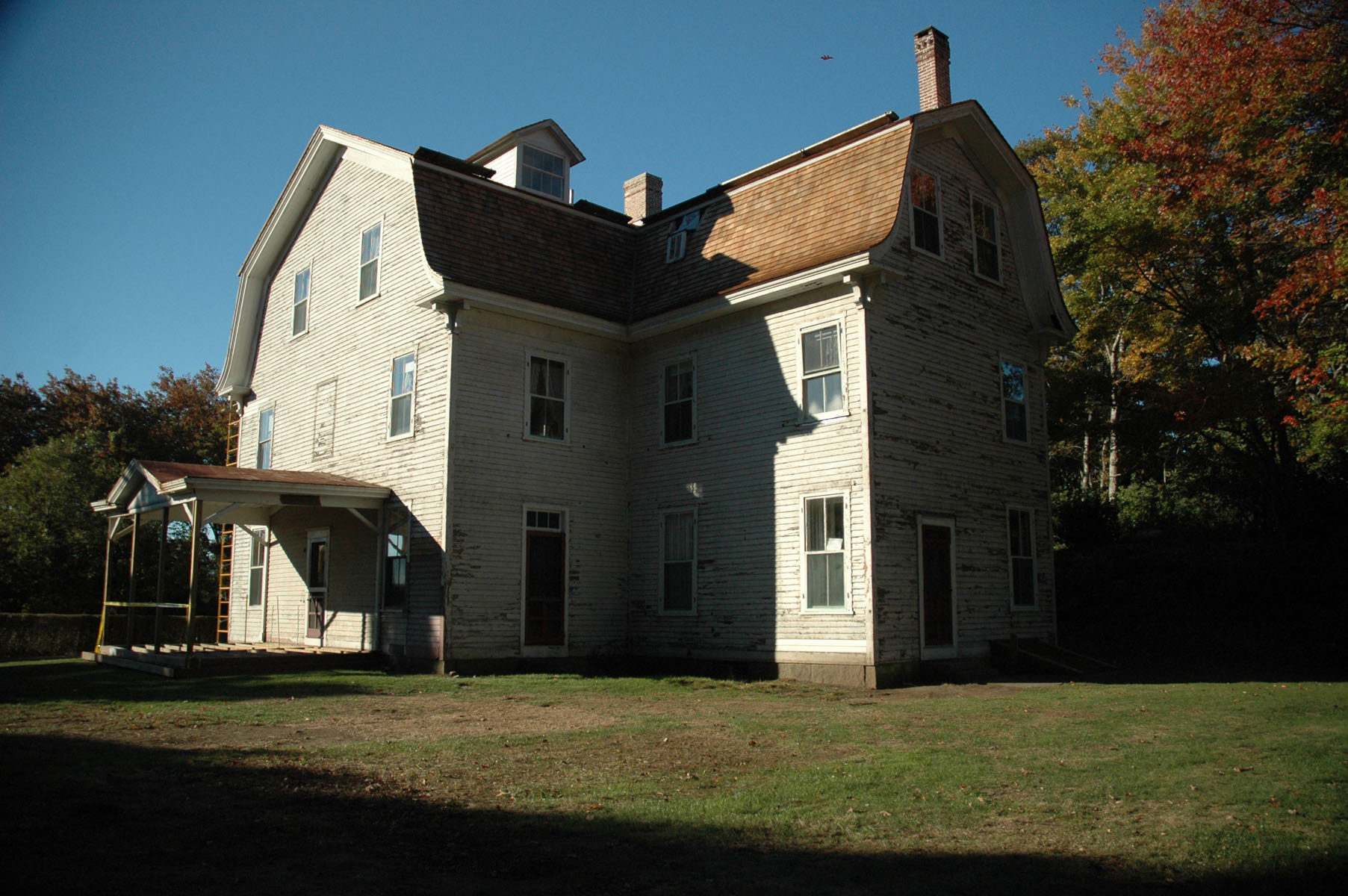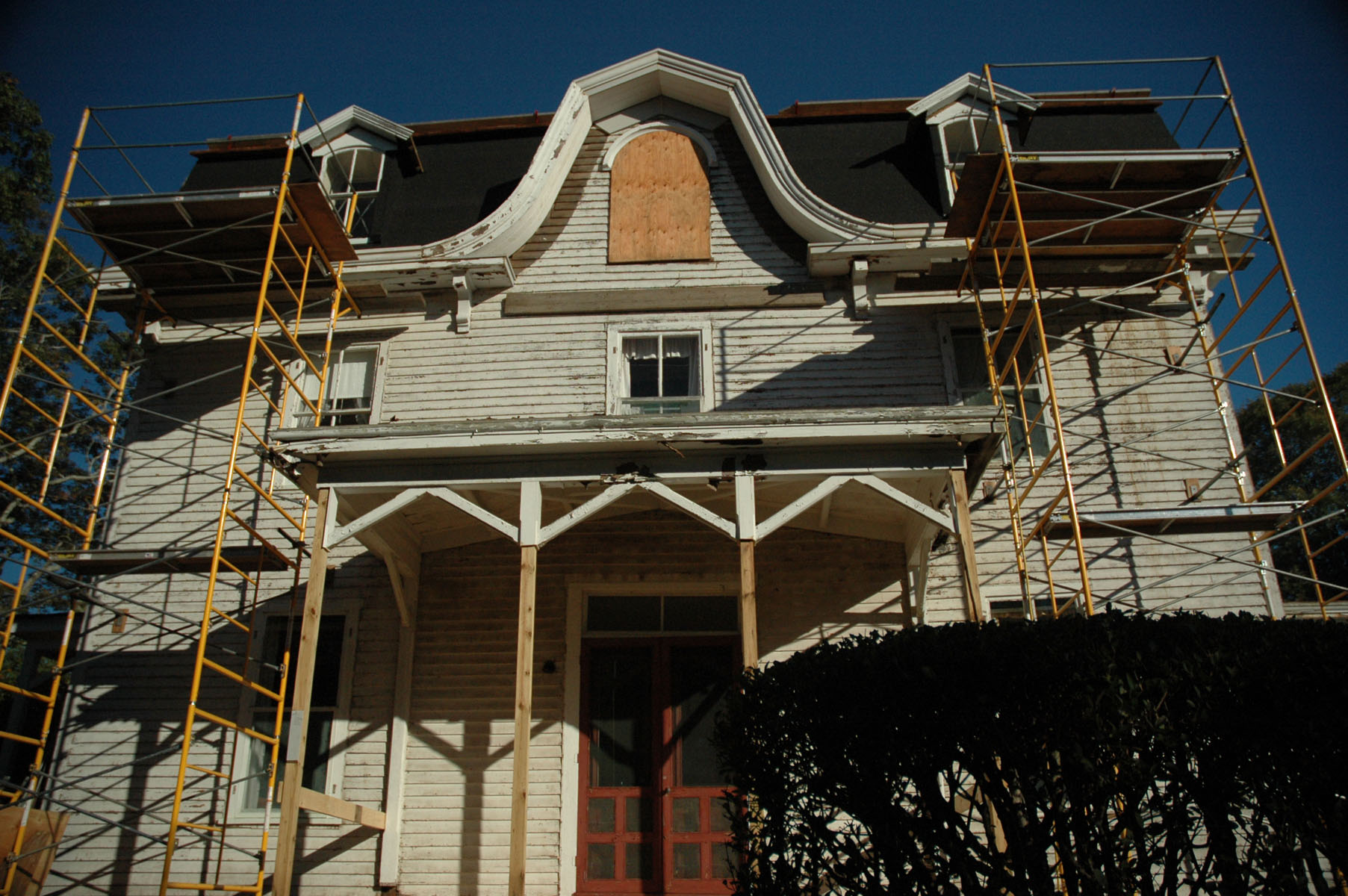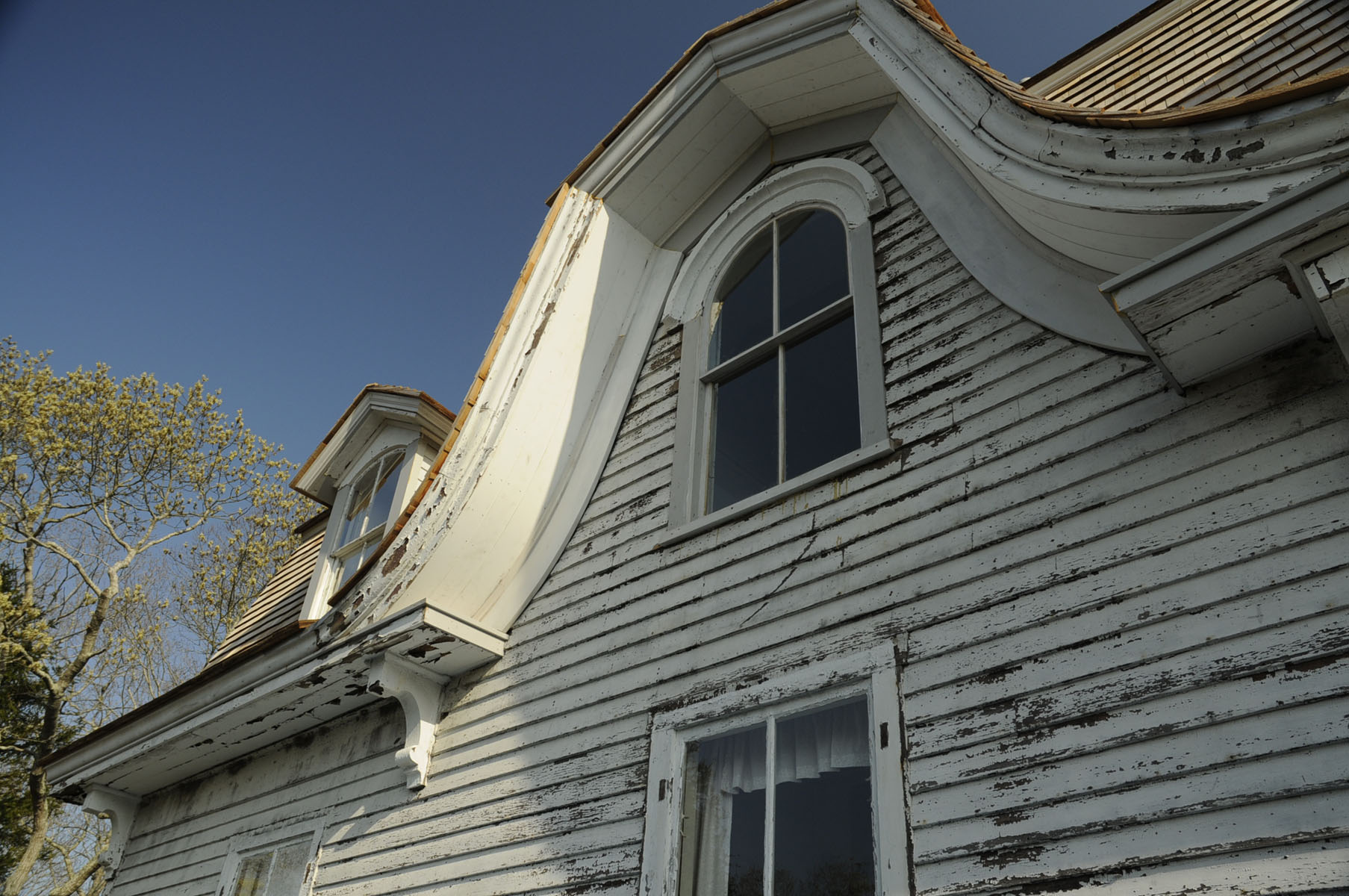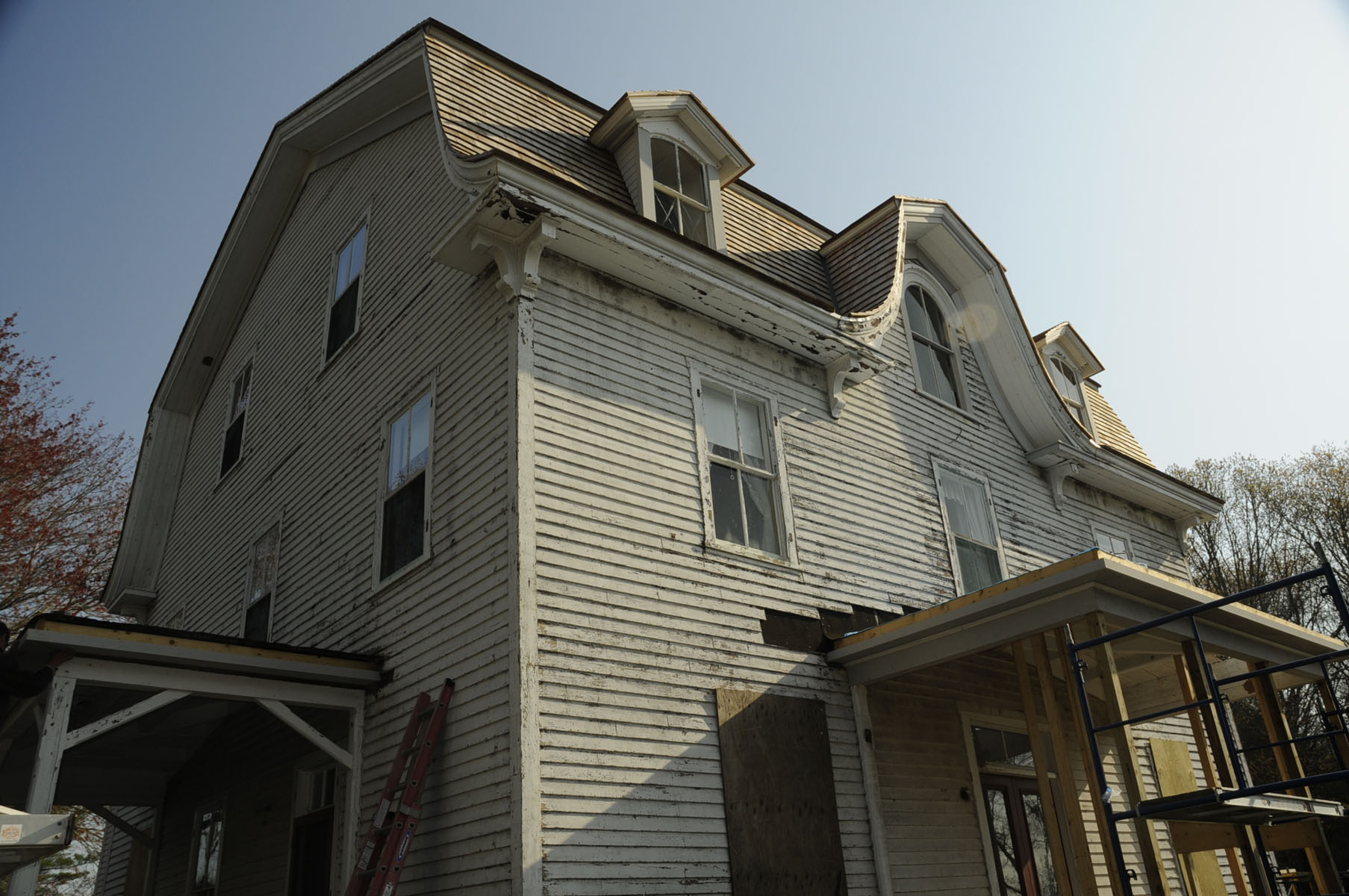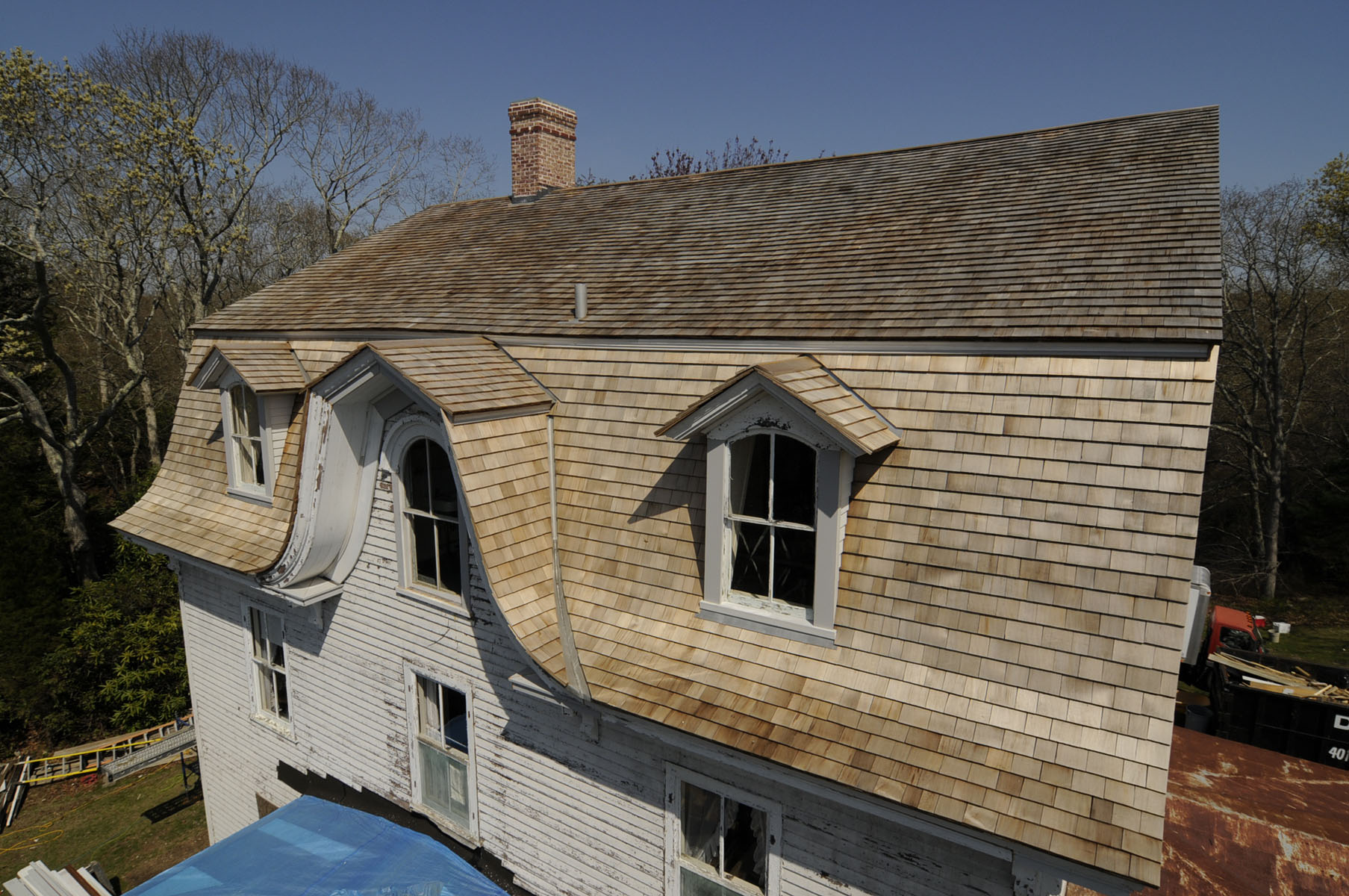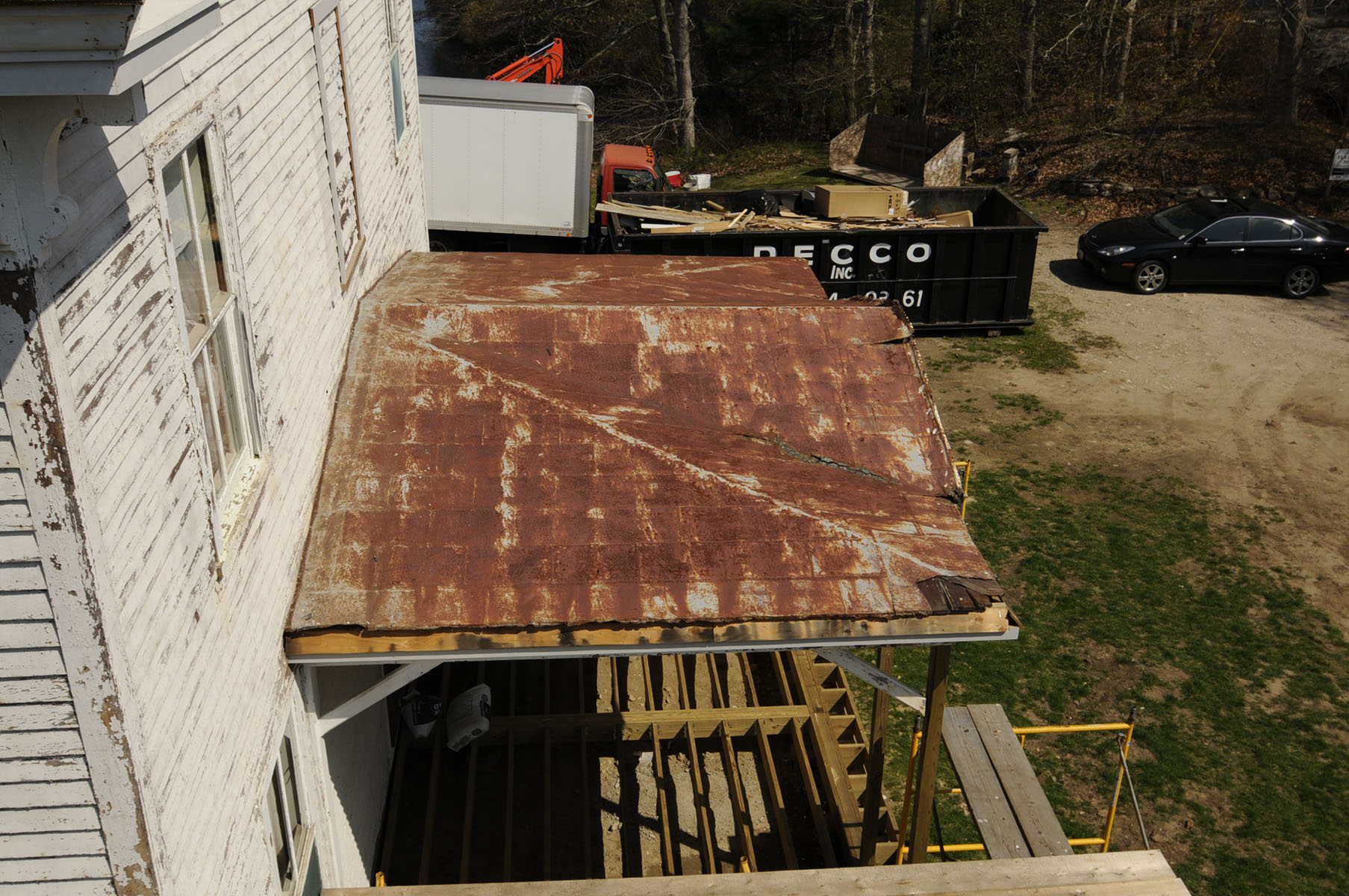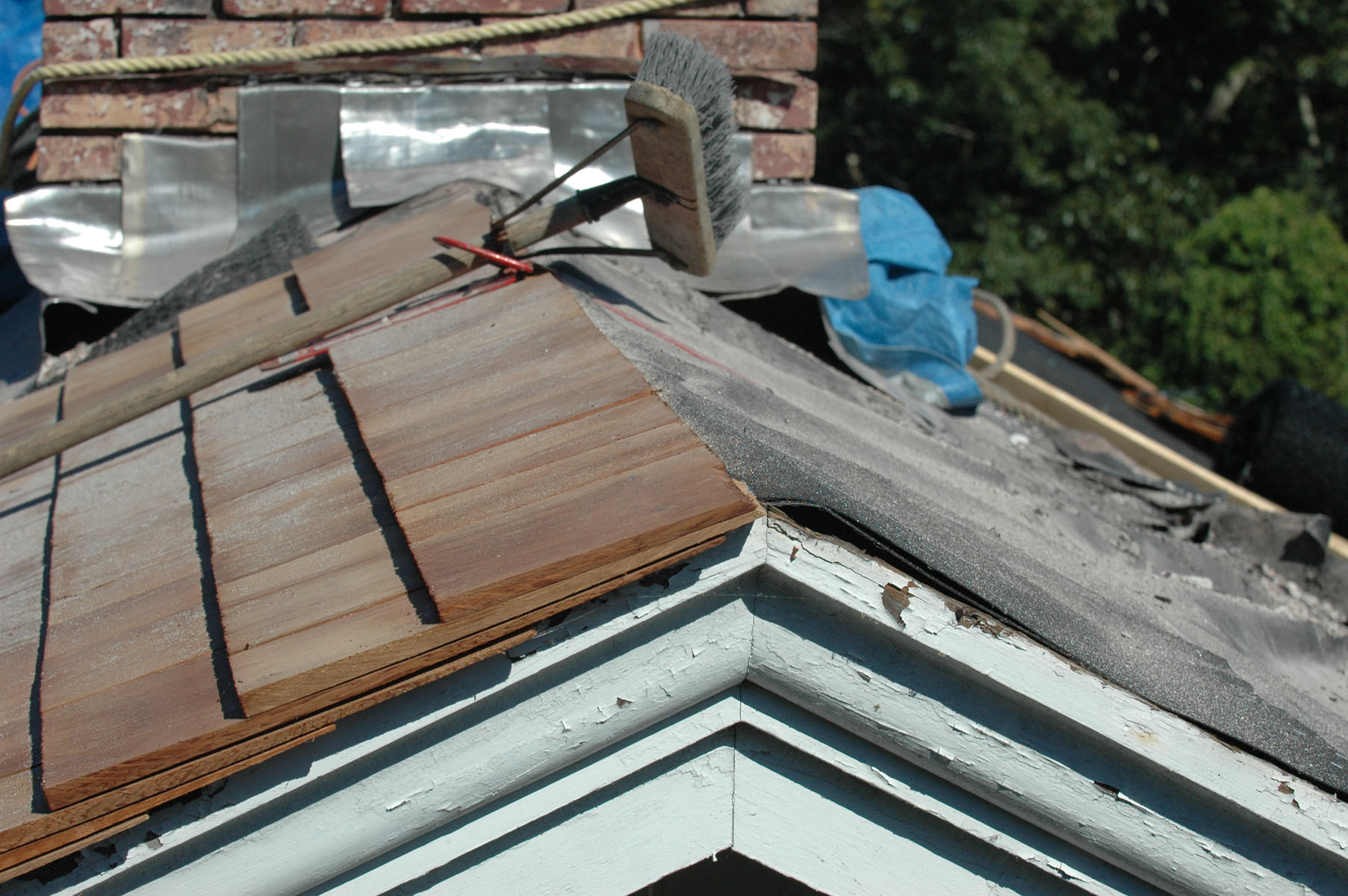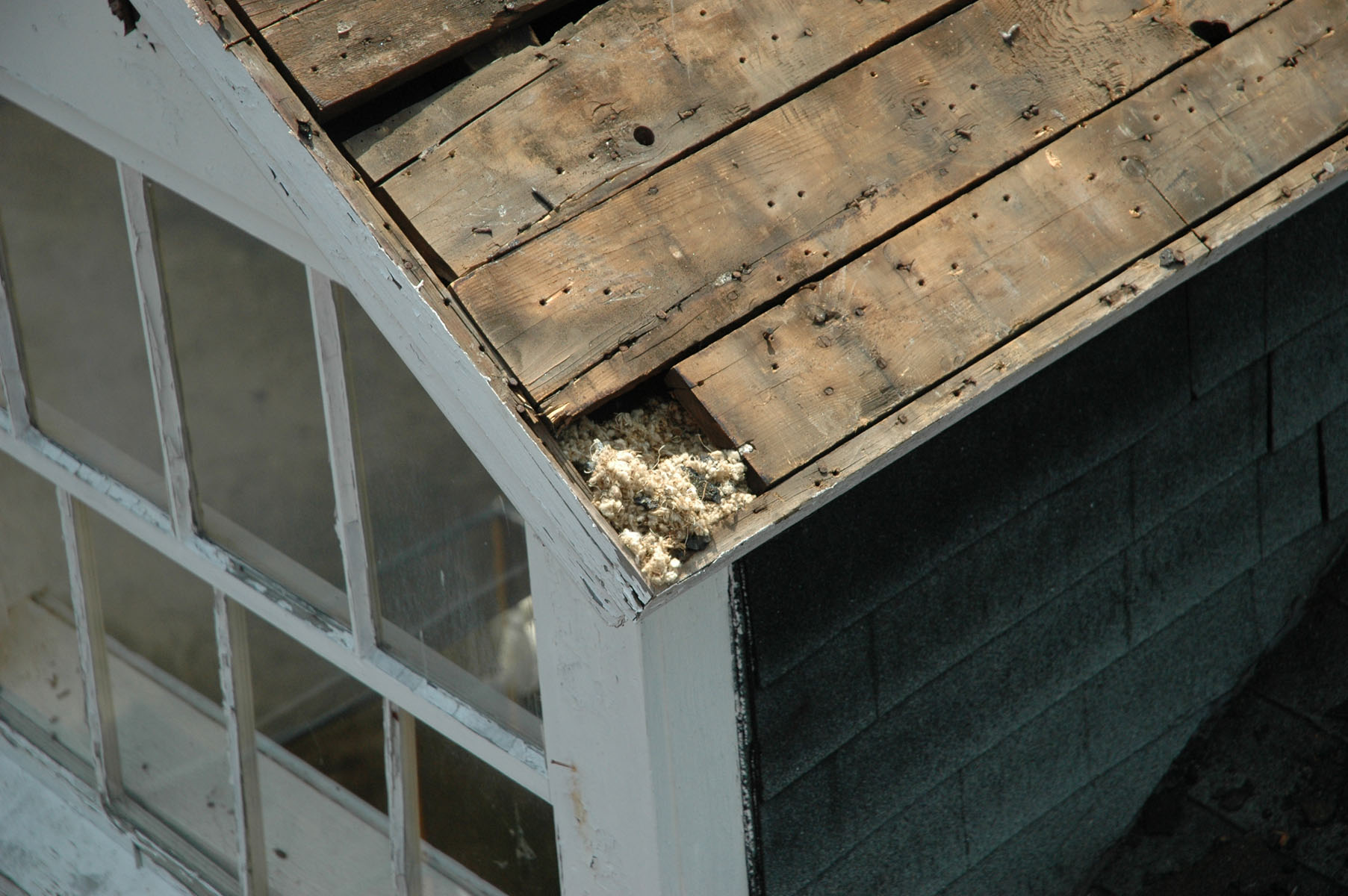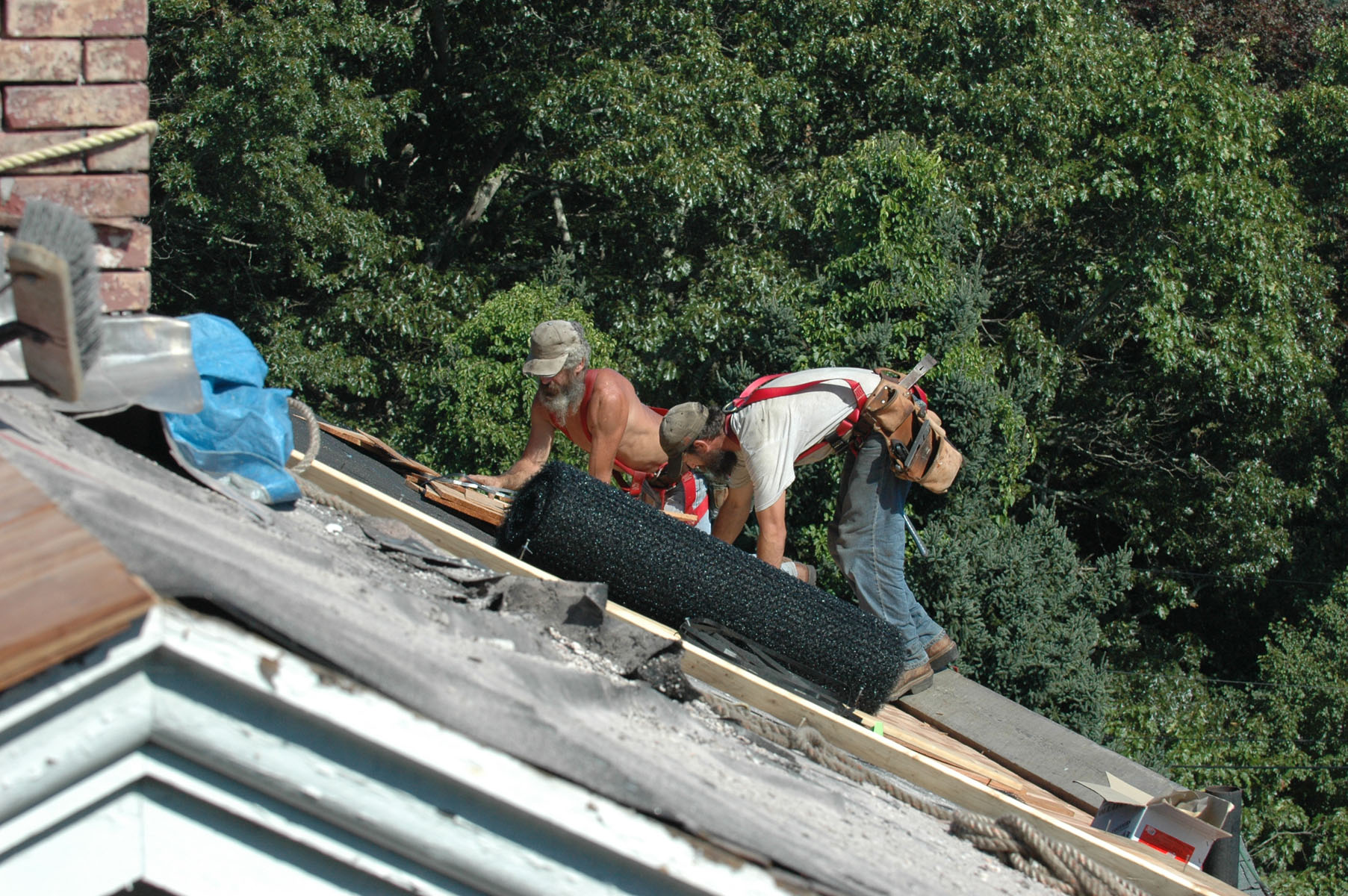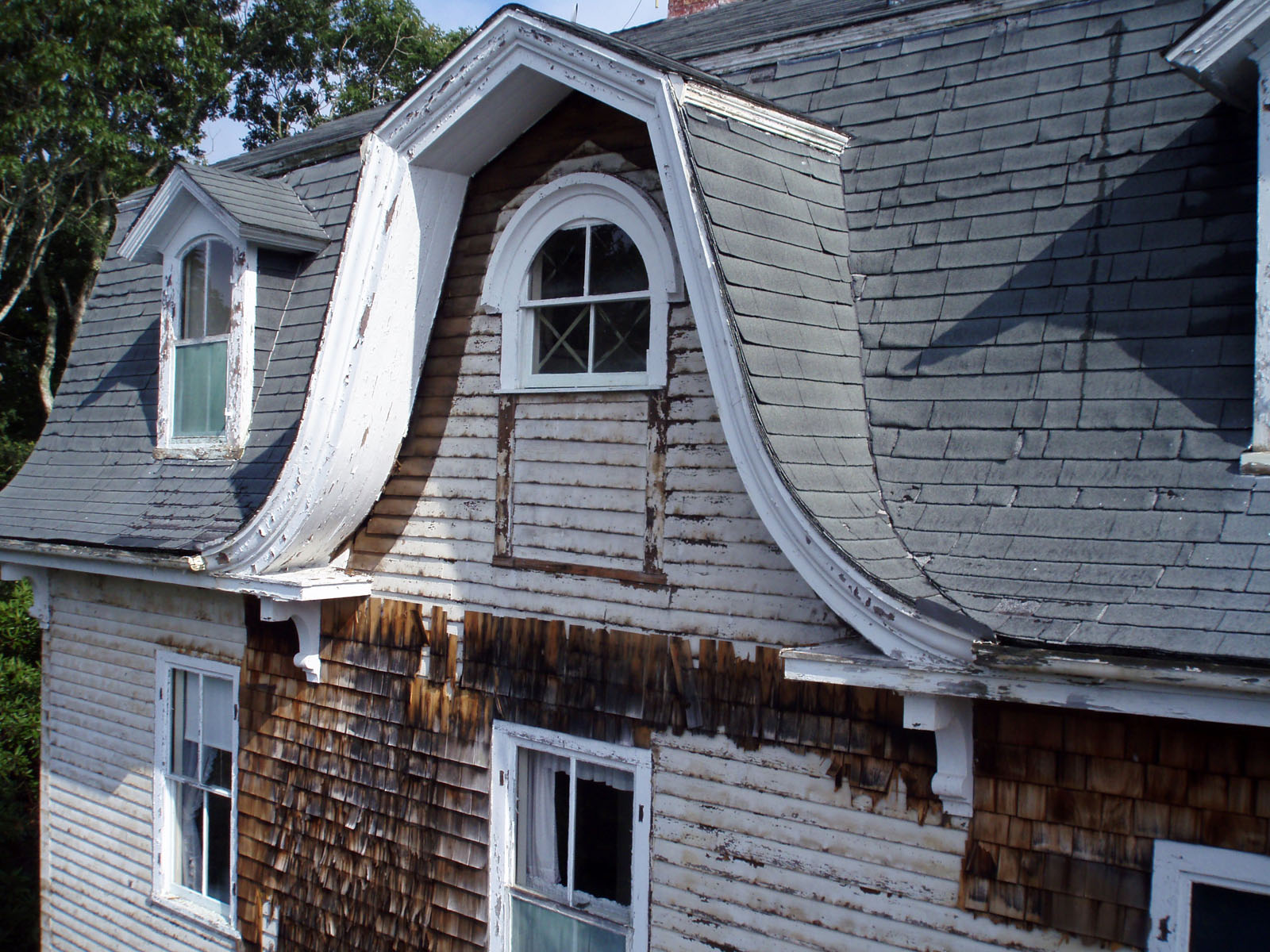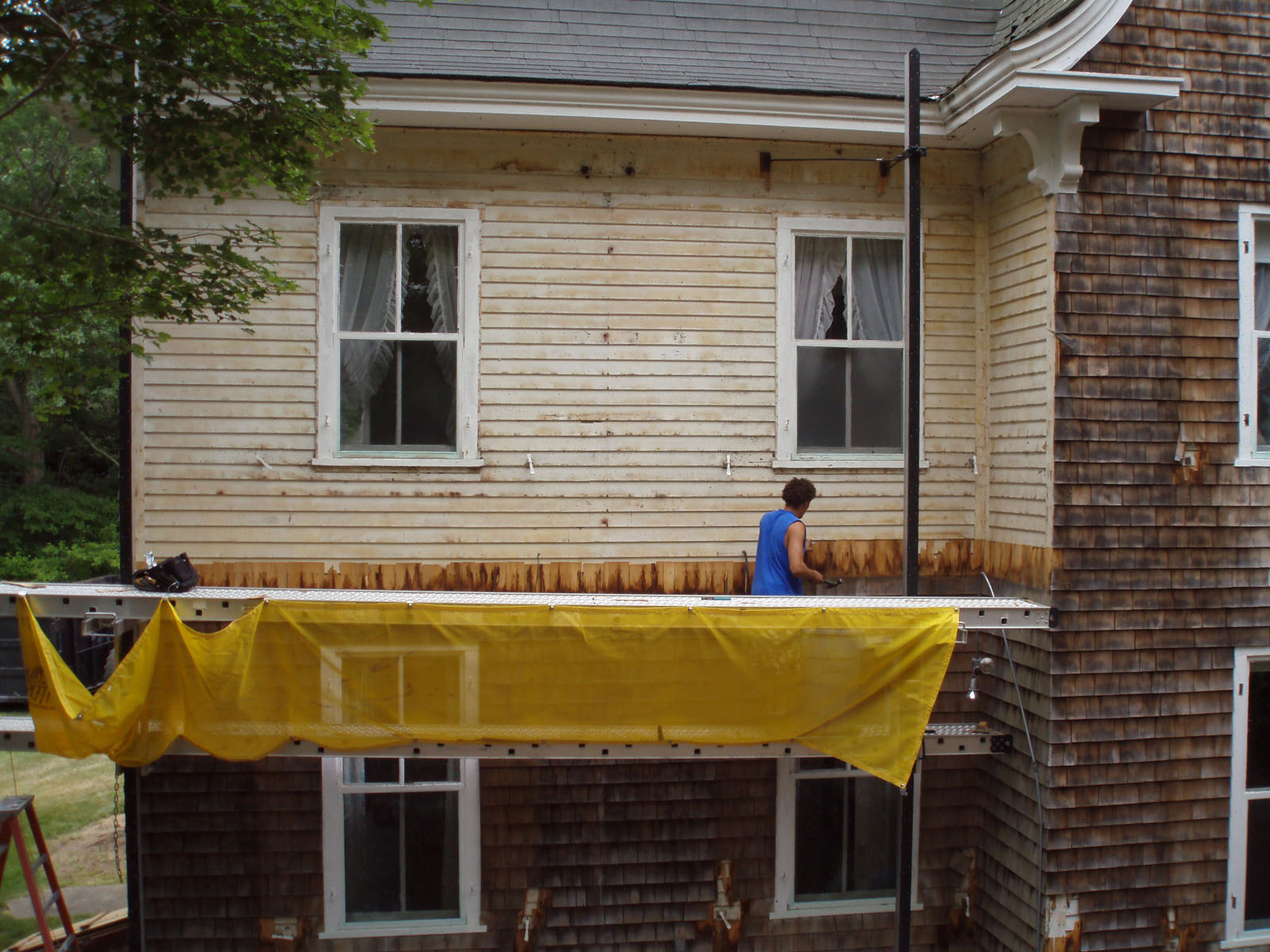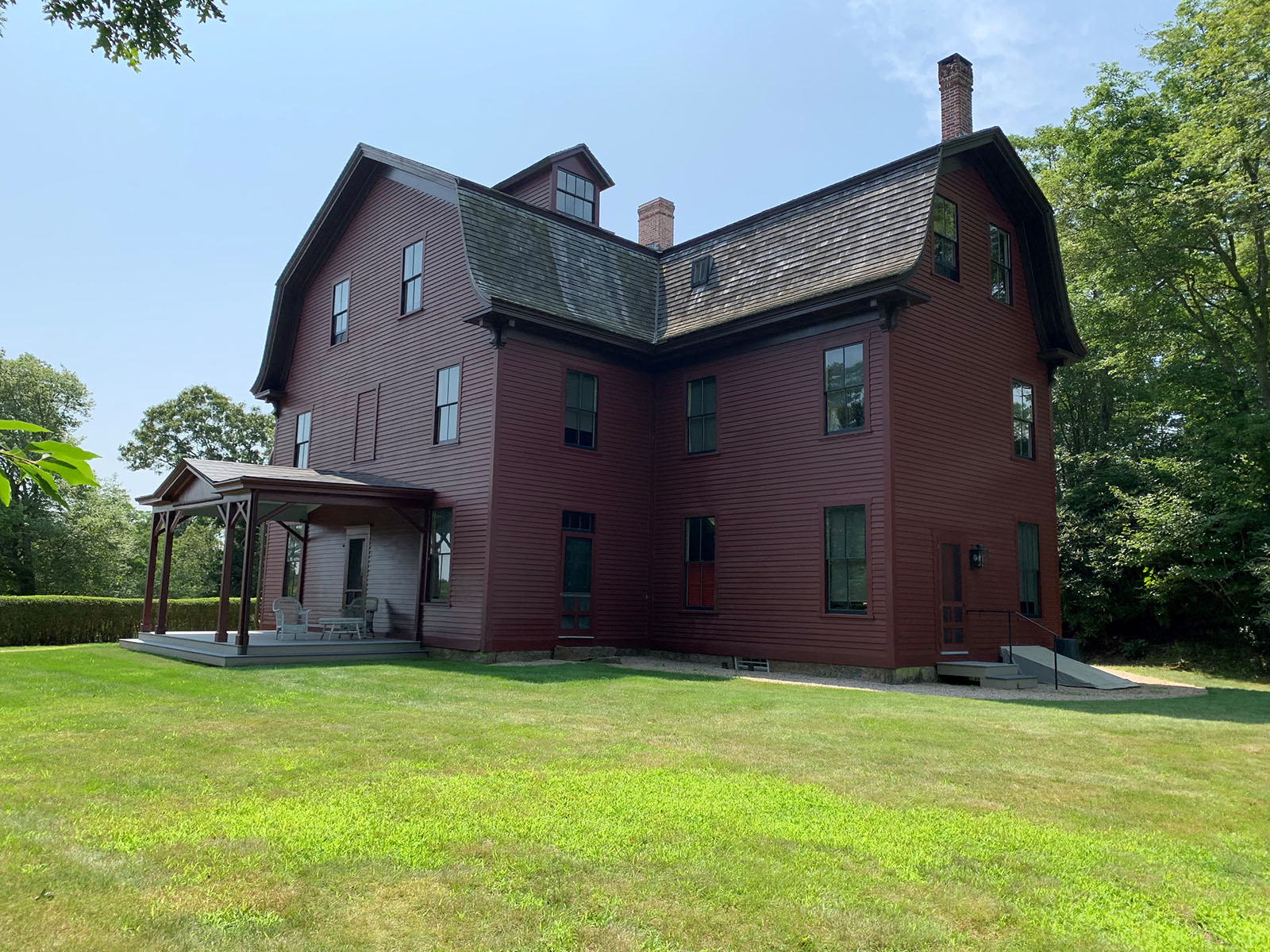The Edward Everett Hale House was built for the famous author by his close friend William B. Weeden, a Providence manufacturer and summer resident of Matunuck, who inherited the Willow Dell property from his grandfather, Wager Weeden. Weeden retained a local builder, Maxson & Son, to construct a large nine-bedroom house on a choice site with spring-fed Wash Pond on the north and distant ocean views to the south.
Originally known as the “Red House,” the Hale House is today a large 3×5 bay, 2.5 story, wood-framed, bell-cast gambrel-roofed house in the late Italianate, Second Empire style with a matching 2×2 bay, 2-1/2 story gambrel roofed ell. The house is sheathed in clapboards and the roof has red cedar shingles. The foundation is stone rubble with large granite facing stones. Wide flat-roofed piazzas characterize the primary south-facing elevation and side elevations, the east being the widest of the three. Windows are double hung, 2/2 in configuration. The roof is characterized by a wide cornice and deep bracketed eaves. The lower hip of the gambrel roof is flared. The roof is ornamented by gable-roofed dormers and a central gambrel-roofed bonnet over the front entry way and piazza. Of the three original chimneys, two are still intact. A third brick chimney has been removed, but otherwise the house is nearly intact, as it was constructed.
The Hale House was donated to the Pettaquamscutt Historical Society (now the South County History Center) in 2006 by Kenneth Woodcock of Matunuck, RI and Washington, D.C. A long-time seasonal resident of Matunuck, Woodcock became concerned when the house was placed on the market by the Steere family in 2005 and it became evident that it would likely be demolished. The site, less than 2 acres between a fresh-water pond and a busy highway, was not large enough to accommodate the new septic system that would have been required if the 9-bedroom house had passed into private hands. Since the house had long been recognized as a local historical landmark associated with the 19th-century American author, lecturer, and clergyman Edward Everett Hale, and its demolition would have been a loss to the entire community, Woodcock worked with the Pettaquamscutt Historical Society (PHS) to secure the zone change and permits required to begin planning for an appropriate use for the house.
The restoration lasted from 2006-2010 and included:
- Landscape: An historic landscape survey was conducted by Lucinda Brockway of Past Designs, Kennebunk, Maine, followed by replication of early traffic patterns on the site. A new well was drilled, and new septic system installed. The site was partially cleared of excess vegetation, and period-appropriate plantings were installed on the hillside to the south of the house.
- Exterior: The roof was replaced; mid-20th century shingles were removed, revealing original clapboards. Porches were fully restored, with funding assistance from the Rhode Island State Historical Preservation and Heritage Commission. The house was painted according to the results of paint analysis performed by John Vaughan of Architectural Conservation Services, Bristol, Rhode Island.
- Interior: The second-floor south bathroom was removed, and the area restored as a sitting area with a view to the ocean. A new bathroom was installed on the first floor. All first-floor spaces except the kitchen and pantry were painted and papered.


